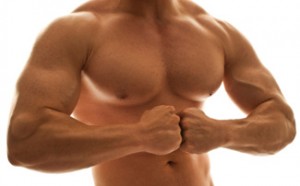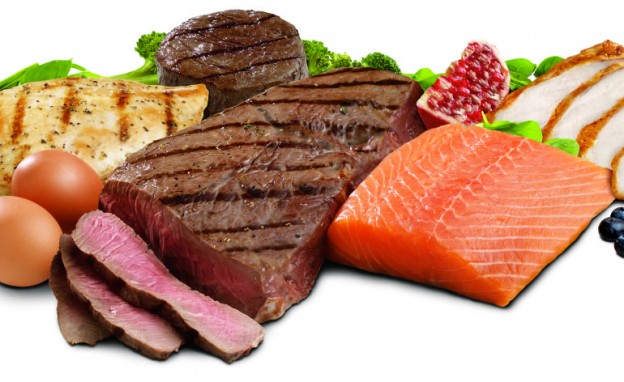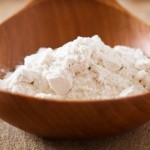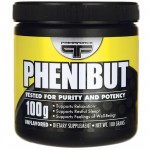By Kevin Cann: Steroidal.com Contributor
Every bro that walks into the gym is walking in there for one reason, to make gains. These gains can come in a number of forms. Some of us want to gain enough muscle mass to blow the sleeves off of our shirts and walk around in a tank top year long. Others are seeking strength gains in the vicinity of dead lifting small buildings.
Whatever your goals are in the gym it is important to make your nutritional plan match those goals. You are not going to be a top notch bodybuilder or strength athlete eating a cup of carrot sticks and a piece of lettuce at every meal. You got to eat big to get big, or lift big.
I typically recommend that strength athletes consume between 15 and 20 calories per pound of bodyweight. This is a good number to help boost muscle size and strength without getting the belly that can typically follow suit.
This means if you weigh 200lbs you would consume between 3,000 and 4,000 calories. Of this we should be getting approximately .75g of protein per pound of body weight. For that same 200lb individual this amounts to 150g of protein intake per day.
 Make sure you are choosing sources of high quality protein. This means eat plenty of meat, fish, and eggs. If you need to use a supplement to get your protein intake make sure to use a quality whey protein. Pea protein powder will not make you an animal in the gym.
Make sure you are choosing sources of high quality protein. This means eat plenty of meat, fish, and eggs. If you need to use a supplement to get your protein intake make sure to use a quality whey protein. Pea protein powder will not make you an animal in the gym.
Determining carbohydrate intake and fat intake can be tricky. Some people will do well on a high carbohydrate diet while others will do well on a high fat diet. There is some good research out there that suggests if we are training under 75 minutes that we do not need any additional carbohydrates to support the activity.
However, in order to build more strength and muscle we need to make sure that our muscle glycogen stores are filled. I usually recommend someone start with a carbohydrate intake of 1.5g to 2g per pound of body weight. For that 200lb individual this is between 300g and 400g of carbohydrates per day. The rest of the calories can come from fat.
The carbohydrate intake can be adjusted according to fat gain and performance. If you begin to notice a little extra padding forming on the midsection cut the carbs down and increase fats. If you feel your energy levels in the gym are declining, increase your carbohydrate intake.
The next big question is usually how many meals per day should I be eating? Truthfully, I do not think this matters much. Eat enough meals to get your calories in and don’t let eating control your life. If you need to schedule work meetings around your meals it is probably best to eat fewer meals. If you have more freedom in your schedule and prefer eating more meals that is fine as well.
The post-workout window is the most misunderstood area of performance nutrition. I like my athletes getting some carbs and protein in the post-workout window to begin the recovery process. It is important to refuel the muscles so that we can come back into the gym in 48 hours and go after it.
Contrary to popular belief your muscles will not shrivel up and waste away if you do not get your Muscle Milk in within 30 minutes of finishing a workout. This thought process comes from the supplement industry telling us this is the case.
Let us put it this way, if we had muscle wasting occur after a 60 minute intense workout we probably would not be around today as a species. Imagine our ancestors being deprived of food, going out on a long hunt, carrying the dead animal back to the camp, and then preparing it, cooking, and eating it. If our muscles wasted away as quick as the supplement industry tells us our ancestors would have been really frail looking dudes, but they were not.
The real post-workout window is 48 hours. This is how long it takes our muscle glycogen stores to recover as well as our central nervous system. This is why it is still important to eat on off days. We cannot underestimate the importance of sleep and vitamin D for recovery as well.
In most cases when we are attempting to make some gains in the gym we over think our approach to nutrition, or we do not eat enough in fear of gaining too much fat. You need to be in a caloric surplus to put on more size. Just because we are eating in a caloric surplus does not mean we need to put on more fat.
First things first, you need to put in WORK at the gym. No one became a competitive strength athlete or bodybuilder without putting their time in under the bar. With your hard work in the gym consume 15 to 20 calories per pound of body weight. Of those calories .75g per pound should be from protein sources such as meat, fish, eggs, and in a bind whey protein powders.
Carbohydrate intake fluctuates a lot per individual. Aim for a carbohydrate intake of 1.5g to 2g per pound of body weight to start. If you begin to get a little fluffy in the midsection cut back on the carbohydrates (which will also cut back on the calories). Get the remainder of your calories from fat and eat as many meals as you need to get in those calories.







